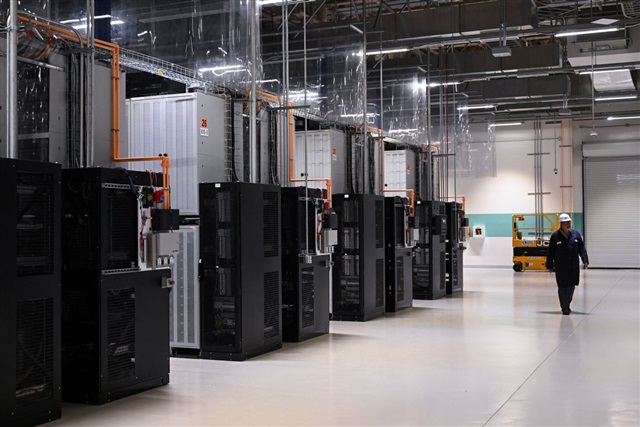Solid oxide fuel cells (SOFCs) are drawing significant attention because of their flexible and rapid deployment capabilities as AI's electricity demand continues to skyrocket. Kaori Thermal Technology, a key supplier to SOFC fuel cell leader Bloom Energy, stated that customer demand remains strong, enabling both capital and workforce expansion. The company said its 2026 capex will be the largest since its founding, and its headcount is set to increase by more than 40%.
Taiwan's energy transition is facing unprecedented challenges. In 2025, domestic solar power grid connection capacity plunged to an all-time low, squeezed by the dual pressures of policy instability and tightening regulations. Industry leaders warn that if the current administrative stalemate continues, achieving 2026 policy targets will be unrealistic, risking not only a single sector downturn but also international doubts about Taiwan's energy resilience as a whole.
Taiwan Power Company (Taipower) is drafting a new set of guidelines aimed at safeguarding grid stability as electricity demand from AI data centers accelerates.
Corporate demand for green electricity is accelerating as Taiwan prepares to implement carbon fees in 2026 and as the European Union's Carbon Border Adjustment Mechanism (CBAM) reshapes export requirements. Data from Taiwan Power Company (Taipower) show that direct supply of green power has risen sharply in recent years, a trend the utility expects to continue as net-zero pressures intensify across supply chains.
As AI workloads reshape data center design, performance is no longer defined solely by computing power. Thermal management has emerged as an equally decisive battleground. Unlike traditional CPU-centric systems, modern AI servers rely heavily on GPUs and specialized accelerators, each drawing hundreds of watts per chip. The resulting thermal density far exceeds the limits of conventional air-cooling, turning heat dissipation into a core infrastructure challenge rather than a peripheral engineering concern.
Shihlin Electric is experiencing robust growth driven by expanding AI computing power needs and accelerated investment in power infrastructure. At HCT Logistics' smart electric vehicle (EV) launch event on December 18, 2025, Shihlin Electric showcased its commercial electric logistics fleet developed with CMC, alongside an integrated solar, charging, and energy storage power system.
Taiwan's Academia Sinica is pushing forward its public infrastructure project launched in 2025, focused on a megawatt-scale mixed hydrogen power generation system using decarbonized natural gas. The initiative aims to produce clean energy while addressing Taiwan's pressing green energy shortfall through innovative hydrogen technology.
Low-priced imported cement continues to undermine Taiwan's domestic low-carbon cement development, prompting TCC Group Holdings chairman Nelson An-ping Chang to propose two key recommendations ahead of the upcoming 2026 trial launch of Taiwan's carbon border adjustment mechanism (CBAM). He called for strict enforcement of a single material source rule in public projects and mandatory third-party international certification for imported cement, warning that without these measures, inspection mechanisms risk becoming ineffective.
Researchers from Academia Sinica, National Central University (NCU), and Yuan Ze University announced significant advancements in hydrogen electrolysis technology at a December 17 press conference held at Taiwan's National Science and Technology Council (NSTC). The team detailed the development of new core materials for proton-conducting solid oxide electrolysis (P-SOEL), aiming to reduce energy consumption and lower costs in hydrogen production.
Texas has become one of the world's leading regions for AI data center construction. However, this trend has put its power grid under dangerous pressure, exceeding what realistic power supply conditions can support. Texas is only one example; several other states are facing similar problems of aging and fragmented power grids, lacking a cross-regional, large-scale power dispatch system.
A recent report from Bloomberg New Energy Finance (BNEF) states that the global nuclear industry is expected to commission fifteen nuclear reactors in 2026, adding approximately 12GW of fission-based electricity capacity. This expansion will reverse the decline seen in 2025, when global nuclear capacity decreased by about 1.1GW. BNEF statistics show that only two new reactors became operational globally by November 2025, while seven reactors were permanently shut down.
More coverage


